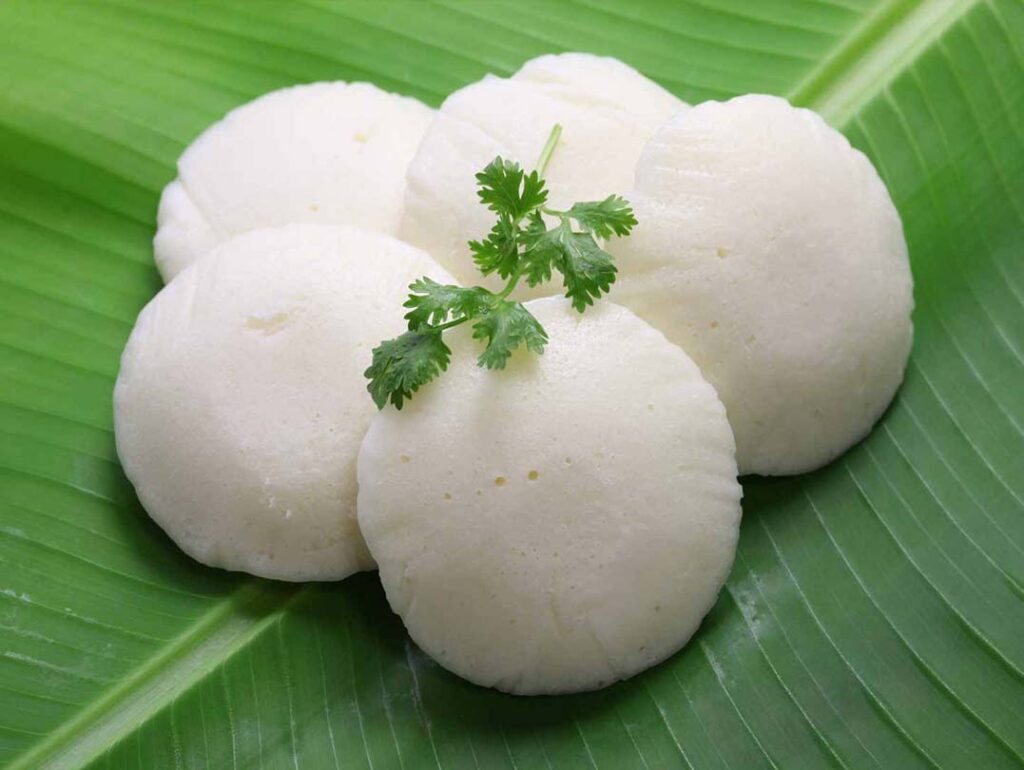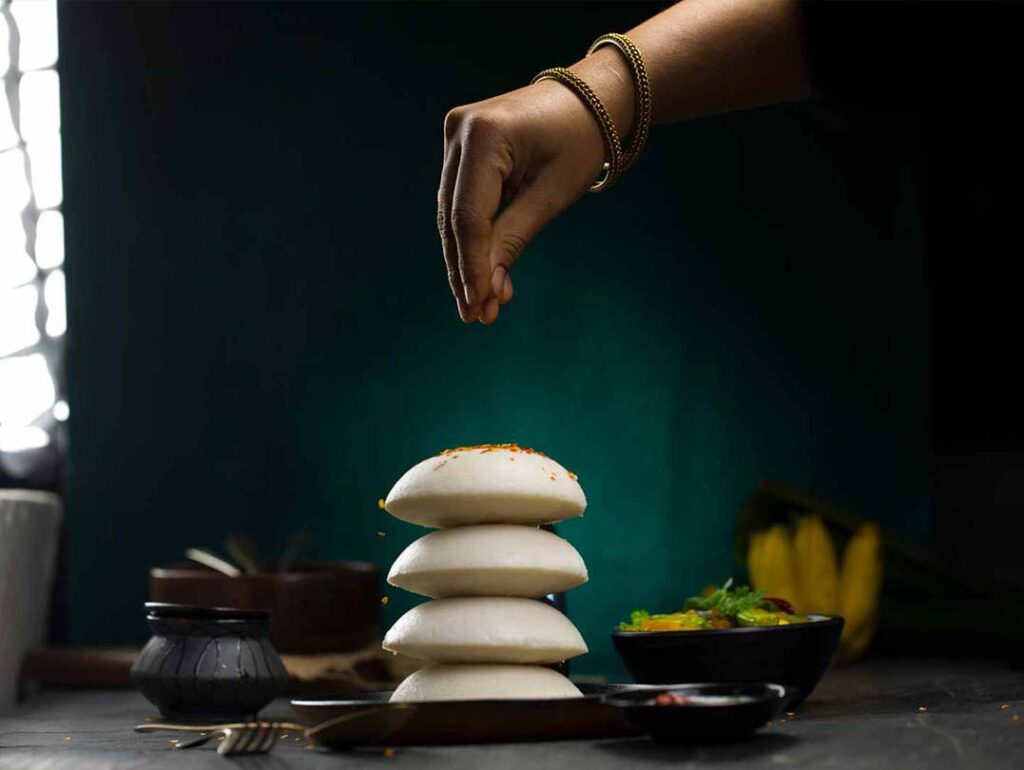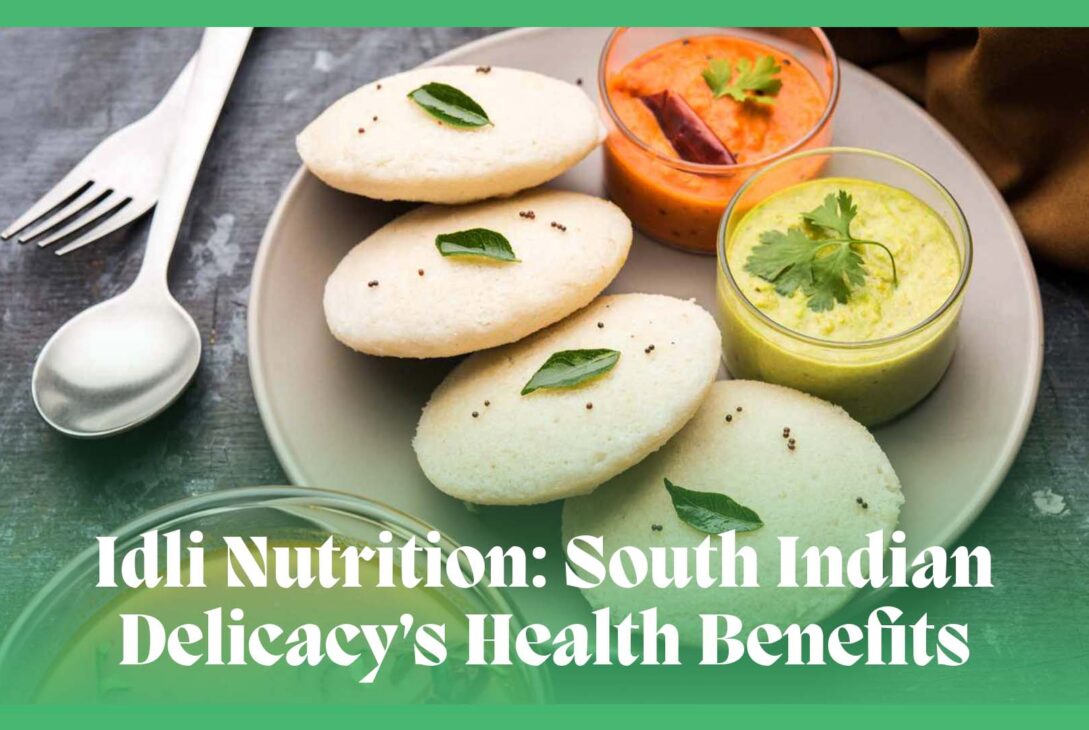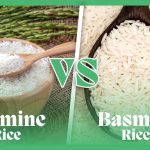Let’s move beyond the world of fad diets and unhealthy breakfast choices; the solution to your nutritional requirements might be concealed under a white, fluffy South Indian delicacy- Idli. This small, humble, tiny cloud-like dome hides a wealth of health benefits in every bite.
Jump in as we embark on a journey to unveil the many nutritional secrets, ranging from its gut-friendly benefits to its rich protein content!
What is Idli?
Idli is a popular South Indian fermented breakfast food made of rice and black grams that goes several centuries back to ancient India, first known as iddalige. Some believe it was first invented in the Saurashtra region of Gujarat and then taken to the South. The ancient idli was made solely of black grams, while the current idli was created by soaking two ingredients separately.
Idli is formed by grounding the grains and lentils separately and then keeping the batter overnight at room temperature after mixing for fermentation. The naturally occurring bacteria initiate the fermentation process that produces lactic acid and carbon dioxide.
The leavened batter is steamed for 5-10 minutes in pans allocated for idli-making. Some more ingredients added to this delicacy for additional taste and nutrition are oats, quinoa, millet, mung beans, and chickpeas. The spongy, white, and delicate Idli is also known as “rice cake” and is a rich source of B vitamins and proteins.

Idli preparation:
The main ingredients for idli preparation are rice, black grams, and other cereals.
Rice, the second most popular cereal after wheat, renders carbohydrates, proteins, vitamins, and minerals like B vitamins, folic acid, potassium, magnesium, selenium, fiber, iron, and zinc.
Black grams, the second or the main ingredient in the preparation of idli are rich sources of proteins like albumin, globulins, and glutelins. Besides that, alternative cereals like Amaranth and Finger millet are sometimes exchanged for rice to enhance the microbial count and increase the enzymatic activities.
Idli is prepared by soaking three parts of rice and one part of black grams separately for 4 hours and then preparing it into the batter. They are then ground into fine particles and further fermented for 12 hours. The fermented batter is placed into molds designed for idli and steamed for 10-15 minutes.

Nutrient composition:
According to USDA, one idli (38 grams) is a low-calorie food providing almost 49 kilocalories of energy. It is a suitable source of dietary fiber that offers 2.2 grams in 9.5 grams of carbohydrates. Idli is a considerable source of protein (2.42 g), while its fat content is low (0.13 g) as idli doesn’t require oil but is steamed to prepare.
Among micronutrients, idli is a good source of calcium, potassium, magnesium, B-complex vitamins, and choline.
| Nutrients | Amount |
|---|---|
| Proximate composition | |
| Energy | 48.6 kcal |
| Carbohydrates | 9.5 g |
| Dietary fiber | 2.2 g |
| Protein | 2.42 g |
| Total fats | 0.133 g |
| Saturated fats | 0.021 g |
| Polyunsaturated fats | 0.054 g |
| Monounsaturated fats | 0.034 g |
| Minerals | |
| Calcium | 3.8 mg |
| Iron | 0.338 mg |
| Magnesium | 9.5 mg |
| Phosphorus | 25.5 mg |
| Potassium | 88.5 mg |
| Sodium | 95.8 mg |
| Zinc | 0.327 mg |
| Copper | 0.054 mg |
| Selenium | 1.33 µg |
| Vitamins | |
| Vitamin C | 0.076 mg |
| Thiamine | 0.046 mg |
| Riboflavin | 0.015 mg |
| Niacin | 0.257 mg |
| Vitamin B6 | 0.016 mg |
| Folate | 14.8 µg |
| Vitamin E | 0.015 mg |
| Vitamin K | 1.18 µg |
| Other nutrients | |
| Beta-carotene | 1.14 µg |
| Choline | 8.25 mg |
Role in human nutrition:
Idli is considered a healthy option for breakfast as it is low calorie, low fat, and provides tons of essential minerals. Let us discuss some of the prominent health benefits of this soft cloud-like delicacy:
Enhanced nutrient absorption:
One of the major benefits of idli and fermented foods is the increased availability and absorption of nutrients. The formation of lactic acid bacteria increases nutrient absorption of iron, calcium, and zinc by breaking down the anti-nutrients that inhibit their absorption. In this way, consumption of idli leads to more availability of nutrients to be absorbed by our bodies, thereby improving overall health.
Furthermore, along with breaking down anti-nutrients, idli also produces biologically active peptides with enzymes.
Improved gut health:
The human digestive tract is home to some 100 trillion microorganisms responsible for several crucial functions. Idli is a natural source of probiotics owing to its fermentation and provides numerous health benefits to gut health. The probiotics contribute to maintaining a balance between gut-friendly bacteria and prevent digestive issues.
The probiotics in idli may also alleviate diarrhea, bloating, constipation, and gas and reduce common digestive issues like irritable bowel syndrome. Healthy gut microbiota leads to low inflammation, a better immune system, and overall better mood.
Better digestive health:
The complex starches and dietary fiber in idli help improve digestive health. Fiber helps improve digestion by slowing digestion for maximum nutrient absorption and provides bulk to stool.
Furthermore, the fermentation process predigests the complex starches present in the ingredients of idli making them easier to digest and suitable for people with digestive problems.
Improved heart health:
Idli is an excellent option for a heart-healthy diet owing to its low calories and fat content. The potassium content helps regulate blood pressure, which is a prominent risk factor for cardiovascular diseases. Additionally, fermented foods like idli contain peptides with blood pressure and cholesterol-lowering properties.
Gluten-free:
Idli is a preferable breakfast choice for those suffering from gluten sensitivity and celiac disease as it is gluten-free. The simple ingredients of idli also show that they are allergen-free and can be easily consumed by anyone.
Treat malnutrition:
The considerable protein level of idli is suitable to add to the diet of children suffering from malnutrition and protein kwashiorkor (1).
Weight management:
Idli is a low-calorie, low-fat breakfast and lunch meal suitable for people who wish to lose extra weight. Protein and fiber are two of the nutrients that aid in shedding extra pounds; the protein enhances satiety and keeps you full for a long time, while the dietary fiber provides bulk to the food that stays in the digestive tract for a long time preventing you to indulge in consuming more calories.
Side effects:
Consuming something daily can pose some deleterious effects on the body although not severe. Some of the side effects of daily consumption of idli are:
Insufficient protein:
The best protein food source is the one that provides all the essential amino acids. Idli although contains protein, however, it is incomplete and not enough, and if you rely on it to fulfill your protein requirement, you might not be able to attain the core body functions such as body growth and repair.
Carbohydrate overload:
Regular consumption of idli may lead to carbohydrate overload as they are low in calories and can cause overeating. This may also lead to weight gain.
Diabetes:
Studies suggest the glycemic index of idli to be between 60-70, which is high for diabetes patients. Although low caloric, the empty carbohydrates in idli may cause a sudden spike in blood glucose upon eating, so diabetes patients should keep their idli consumption under check.
Chapati vs. idli: which is healthier?
Chapatti, probably one of the most popular breads in South Asia and India, is another preferred choice of breakfast in the region. But which is more suitable for a healthy diet? Is it the flat round chapatti or the dome-shaped idli?
Let us compare the nutrient composition of both foods and find which one has the upper hand:
| Nutrients | Idli | Chapatti |
|---|---|---|
| Serving | 4 per cup | 6 per cup |
| Energy | 76.57 kcal | 72.25 kcal |
| Protein | 1 g | 2 g |
| Fats | 1.77 g | 0.37 g |
| Calcium | 6.80 mg | 4.94 mg |
Keeping in account the above composition, idli provides more calories, less protein, more fats, and more calcium compared to chapatti. So, in terms of macronutrient composition, chapatti is the clear winner, however, when it comes to calcium, idli has the upper hand as four servings of it renders almost 7 mg necessary for women of all ages.
The glycemic index is the rate at which the food increases the blood sugar level. Any value below 60 is desirable for individuals with diabetes and on weight loss diets. The glycemic index of chapatti is 52, placing it in low to medium GI, while the GI of idli is 60-70, placing it in high. The GI of both foods shows that chapatti has the upper hand in terms of its consumption in weight loss and diabetes.
How to make idli a healthier meal?
Idli, an already healthy choice of breakfast can be made healthier by taking just a few steps. Let’s discuss them.
Use the right ratio:
Studies suggest that using the ratio of 3:1 of rice to black grams is better and renders more nutrients and benefits than using a rice and grams ratio of 2:1 or 4:1.
Use brown rice:
Brown rice is the less processed and nutrient-dense version of white rice. Using brown rice instead of white ones for making idli will provide extra nutrients including dietary fiber making it suitable for chronic disease patients.
Add sesame seeds/sesame past:
Idli, although a considerable source of protein, may lack some essential amino acids that can be fulfilled by adding sesame seeds or paste to it along with fiber and essential fats.
Add greens:
Another great way of enhancing the taste and nutrient profile of idli is to add some green leafy veggies to your batter after placing it in the steamer.
So, next time your eyes get laid on a plate of idli, know that you are not only getting the fluffy texture and delicious taste of idli but are also benefiting from the tons of health benefits they provide.
Reference:
- An Overview on Characterization and Value Addition of Traditional Indian Fermented Food: Idli









